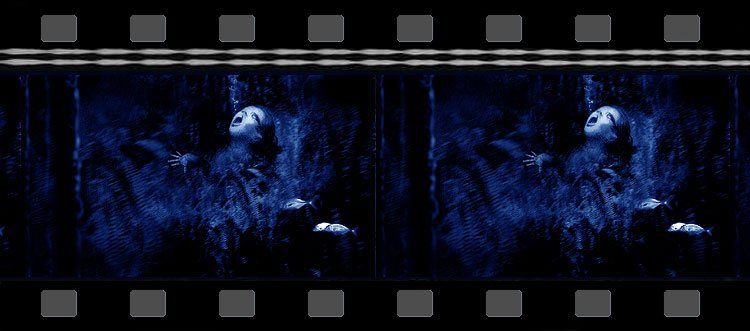1985 . Idea

A new form of classical music performance

First of all: I (Walter Wilhelm Legenstein) was born in the middle of the last century in the beautiful city of Salzburg, the birthplace of Mozart, and, to be honest, only by pure chance (for love) did I spend almost two decades in Ansfelden, Upper Austria – the birthplace of a certain Anton Bruckner. I readily admit that until then, and not only because of my location, Mozart's music was much closer to me than the symphonies of Beethoven, Brahms, or even Bruckner.
It was only when I became professionally involved with Bruckner's time as a simple village schoolteacher and organist in and around Linz on the Danube, as the artistic director of the local city television station, that I became aware of him.
Up until then, I had written music reviews for the Linzer Rundschau, covering regional events with Pink Floyd, Procol Harum, Santana, and many other popular musicians. But after hearing Bruckner's romantic Symphony No. 8 in C minor (WAB 108) in the newly built Brucknerhaus in Linz, I was so impressed that I decided to produce a more journalistically ambitious piece on music for the ORF (Austrian Broadcasting Corporation) about his enduring influence on the contemporary population. As a native of Salzburg, I tried, in addition to the usual research, not to speak from, but to observe the mannerisms of the composer's Upper Austrian descendants, to discover something of his supposedly provincial (most-headed...) character as an initially eccentric folk musician playing traditional Austrian folk songs at weddings, and to have the remarkable transformation into the gifted composer of his world-famous symphonic music explained to me by more advanced experts.
As a filmmaker, after listening thoroughly to his symphonic music, I was quickly captivated by it. NINTH Bruckner's music fascinates me. It was surprisingly different, not at all like classical music usually sounds. To me, it immediately sounded more like symphonic film music, and that's why I've been preoccupied with it ever since. I also desperately wanted to understand what kind of person and contemporary Anton Bruckner actually was in the late 19th century, and what inspired him to create this form of music when film music didn't even exist yet. What circumstances inspired him to develop such a modern cinematic narrative form? An extremely exciting question, and reason enough to immediately begin painstakingly reconstructing the often very vague details from the information woven into it.infonìa visìbile to work it out (which took me over 40 years...).
This Bruckner was never the provincial musician portrayed in books. Rather, he was a highly gifted individual, unrecognized at the time, a deeply devout Catholic, a gifted church musician, and certainly a musical genius from childhood onward. This question preoccupied me, and I had very interesting conversations about it with ordinary, musically educated people at the nearby Baroque St. Florian Monastery, one of Austria's largest and most famous monasteries, where Bruckner spent his childhood as a choirboy and was himself introduced to the world of church music by monks and vicars.
My initial attempts at serious collaboration with Bruckner experts mostly failed, as my ambitious project to visualize the Ninth Symphony was simply considered the nonsensical undertaking of someone completely ignorant of music. For these contemporaries of a conductor like Herbert von Karajan, Bruckner's incredibly profound Ninth was, and remains to this day, simply his unfinished work, nothing more. They simply refused to acknowledge any hidden visual message within it. These self-appointed guardians of the holy Bruckner grail didn't take my project seriously at all, so initially I couldn't expect any active support from them, but at least they left me to continue my research in the archives and libraries undisturbed.
Thanks to my good contacts as a regional, culturally active television producer, I gained access to many forgotten and normally closed-off monastic secret archives, and also opened doors to unpublished contemporary accounts of Bruckner, as well as the works of profound and well-read historians, which helped me immensely to gradually uncover incredible insights into Bruckner and the history of the almost mystical location of his birthplace, Ansfelden – which increasingly confirmed my initially vague suspicion of a good story:
Bruckner's Ninth Symphony is far more than just a conventional symphony!
It is generally known and a fact in the music world that Prof. Dr. Anton Bruckner's music was inspired by Giovanni Pierluigi da Palestrina, Johann Sebastian Bach, Ludwig van Beethoven and Franz Schubert, and he is considered one of the essential innovators of harmony in the late 19th century.
This seemingly sober, academic approach to music would be downright insultingly boring for a film adaptation of a Bruckner symphony! So, in 1985, alongside my local television reports about the painter and graphic artist Marc Chagall, who died that year at the age of 97, the completion of the residential building designed by the painter and graphic artist Friedensreich Hundertwasser in Kegelgasse in Vienna's 3rd district, the start of the ZDF broadcast of the hospital series "The Black Forest Clinic," the release of Doris Dörrie's film "Men" in West German cinemas, and the first Wimbledon tournament victory of the very young Boris Becker, I decided to delve more deeply into the almost cinematic symphony of Bruckner's Ninth Symphony as a filmmaker.
After initial studies of Bruckner's Ninth Symphony and its genesis, I had a concrete goal: In eleven years, on the 100th anniversary of the Upper Austrian composer's death (October 11, 1996), I wanted to realize in his birthplace Ansfelden near Linz on the Danube / Austria the audiovisual realization of his work, which he himself had already vaguely outlined.
NINTH SYMPHONY to realize this in a fusion of orchestra, drama and cinema that has never been seen before!
